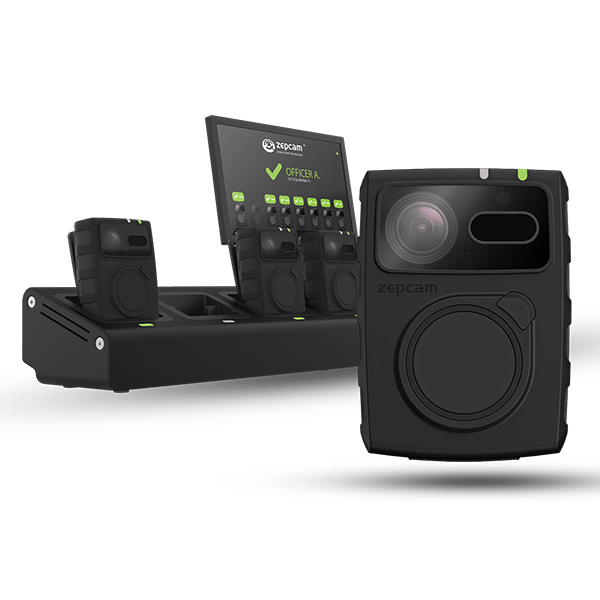The do's and don'ts of bodycams
There’s more to using a bodycam than you might think – something Anton Bos, director of BOAtrainer, is keen to discuss. Together with a group of trainers, he provides guidance to local law enforcers across the country. His bodycam training is centered around the practical use of ZEPCAM’s bodycam. So what are the most important do’s and don’ts regarding bodycams? Anton reveals all during an impromptu video call.

An in-depth look at how to use bodycams in stressful situations.
Instead of defining bodycams as ‘essential’, Anton sees them as a means to provide extra support to local law enforcement officers working on the street. You can fine someone without a bodycam, but if things go wrong, you have less resources to de-escalate the situation. Compared to a baton or pepper spray, a bodycam is a relatively peaceful tool, which initially doesn’t cause a lot of resistance among citizens.
Think of the why
It’s important for employers to consider their reason for implementing a bodycam solution. They need to ask themselves: how are they preparing for implementation, how is it registered, which work instructions are they following, who is responsible for decision-making and how do they deal with privacy-sensitive information? On paper, things are not always organised correctly. This will become obvious during a training session, because then we train following whatever instructions an organisation has on paper. We expressly advise to tackle and resolve inconsistencies beforehand.
Safety first
Even though operating a bodycam is relatively easy, things get complicated when a situation gets stressful. This is when local law enforcement officers forget to turn it on or find out they don’t even have it on standby. This means that if they need to film an incident, it’s too late. We try to sort this issue out during our practical training. If someone picks up a chain lock, this would theoretically be a great time to turn on the bodycam, but you have to consider your own safety first. A more appropriate next step is to grab your handheld transceiver and communicate to colleagues that you’re being attacked. During training sessions, you often see people immediately turning on their bodycam, while there is a lot more going on during a conversation. You have your colleagues, bystanders and the bodycam. It helps to remember that bodycams are an addition to all the things you already have at your disposal in dangerous situations.
Using your bodycam correctly
The devil is often in the details. We often discuss how to stand, what the best distance to a person is, what the first and second local law enforcement officer should do and how to choose the best moment to record. The last thing you want to do is accidentally press the wrong button and only record the skies (it happens). Thinking about the position of your bodycam ties into this. When you get into the fighting position, most people who are right-handed put their left leg forward. This means your camera automatically gets the best images on the left side of your vest (and vice versa). Using the bodycam correctly also means ensuring the conversation doesn’t escalate by switching on the bodycam if this isn’t necessary.
We prefer to not just tell people how to use a bodycam, but ensure they know how to de-escalate the situation before activating it. All instruction manuals state that there should be a clear warning before filming. This means local law enforcement officers need to clearly point out that they are carrying a bodycam which they will turn it on if the situation gets out of hand. What I often see people incorrectly doing, is being less quick to apply those communication skills and immediately resorting to using a bodycam.
The importance of integrity
Integrity comes before everything . Using bodycam images against your colleagues (unless they are breaking rules), to investigate a group of people or invading people’s homes to obtain images is not done. Bodycams are primarily for your security and any invasions of privacy are absolutely out of the question. Staying alert and constantly discussing the regulations is paramount, as the incorrect usage of bodycams can cost you your job. In conclusion: consider how you communicate, what you communicate, why you turned the camera on at all and check whether this respects legal and privacy standards. By using your bodycam in a mindful manner, you stimulate good behaviour and contribute towards more trust and less conflict.
Products used

T2+ Bodycam
More information >

Smart Docking Station
More information >

ZEPCAM Starter Package
More information >

